Thermoluminescence (TL Testing)
The scientific technique of thermoluminescence (TL) is used to evaluate the authenticity of archaeological pottery. As pottery ages, it absorbs radiation from its environment. We extract a small sample from each piece we analyze and heat it until it glows with a faint blue light, known as TL. The older the pottery is, the more radiation it will have absorbed, and the brighter it will glow. This glow is measured to calculate the approximate age of the pottery.
Materials that can be dated by TL
Thermoluminescence can test fired clay such as pottery, earthenware and terracotta, as well as porcelain, stoneware and the casting cores of bronzes. Artemis Testing Lab can test pieces from any culture, as long as they have been fired to above 500°C and the clay contains a sufficient quantity of TL minerals (quartz and/or feldspars), as well as radioactive inclusions (normally uranium, thorium and a radioactive form of potassium). More recent pieces can be harder to test.
Accuracy of TL testing / dating
Generally speaking, when a sample is drilled and there is no information available about the burial environment, one may expect +/- 25% uncertainty, and this is more than adequate for authentication where the question is whether the piece was fired in antiquity or recently. The latest computer technology supports and completes analysis.
X-Ray Fluorescence (XRF) spectroscopy
X-Ray Fluorescence / XRF spectroscopy is widely used for qualitative and quantitative elemental analysis of archaeological samples. It is a nondestructive analytical technique used to determine the elemental composition of materials. XRF analyzers measure the fluorescent (or secondary) X-ray emitted from a sample when it is excited by a primary X-ray source. Each of the elements present produces a unique set of characteristic fluorescent X-rays, providing a conclusive analysis of the material composition.
XRF results include the proportions of elements present in the sampled archaeological or historical material. This may be used to establish likely provenance, manufacturing technique, mineral sources, and fabrication technology. The obtained data may detect inclusive material and/or detect reproductions and counterfeits.
Which materials can be tested by XRF?
XRF can be used to test a wide range of materials from ceramics to metals. XRF testing provides a good, uniform detection level across a large portion of the Periodic Table and is applicable to a wide range of concentrations, from 100% down to a few parts per million (ppm). XRF is a safe and non-destructive process
X-Ray Analysis
Traditional X-Rays offer a simple, yet highly accurate look at what is beneath almost any surface. Artemis Testing Lab also offers traditional X-Ray testing of pottery, metal and stone to get a better view than possible by the naked eye (to see hidden repairs, new material, extent of restoration).

